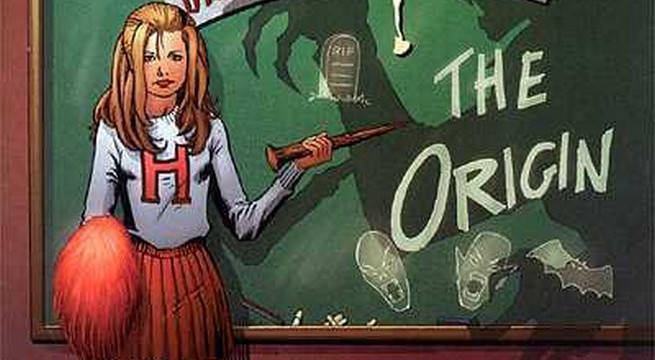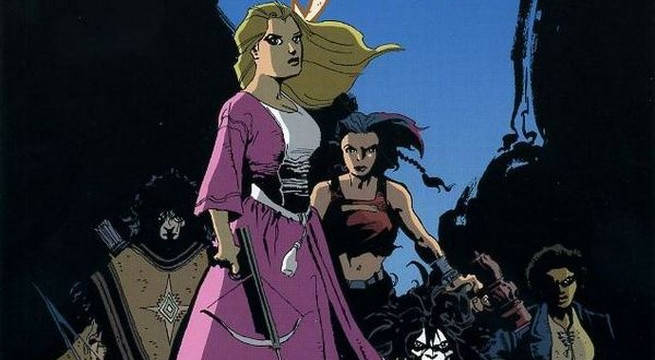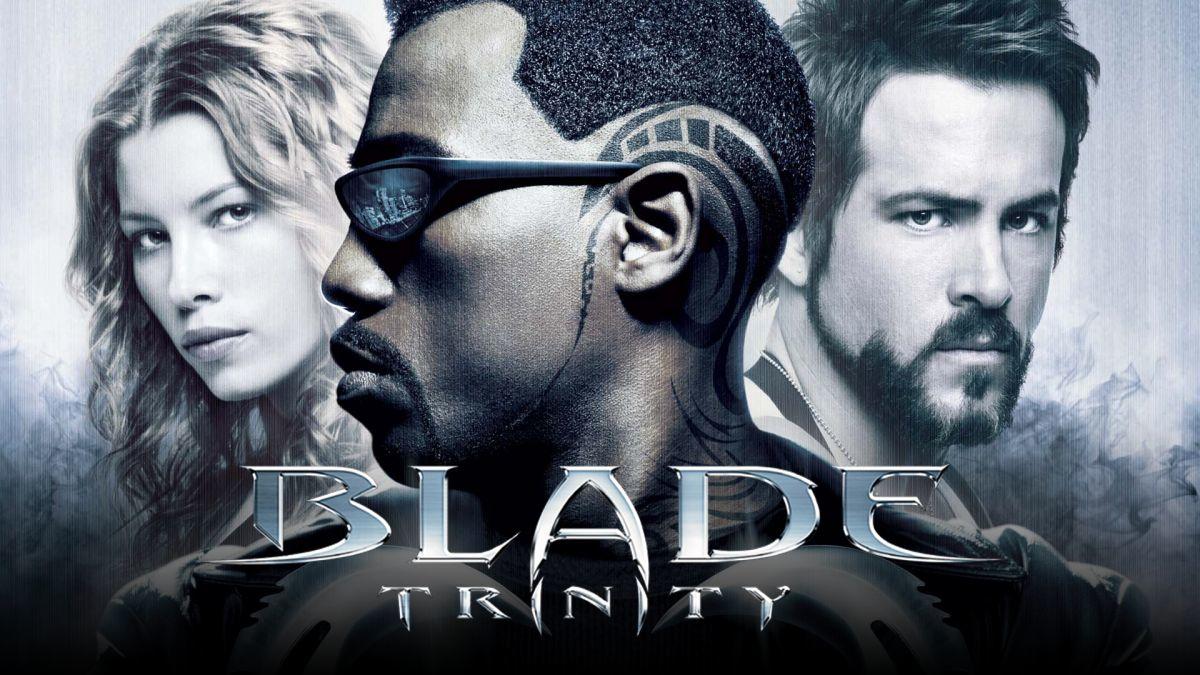A Guide To Buffy The Vampire Slayer Comics
On March 10, Buffy the Vampire Slayer fans celebrated the 20th anniversary of the first airing of [...]
The Origin
Dark Horse Comics was publishing Buffy the Vampire Slayer comics well before Buffy the Vampire Slayer Season 8. Most of those comics are now considered to be non-canon, but Buffy the Vampire Slayer: The Origin is an exception.
This three-issue miniseries addresses the issue of how the Buffy the Vampire Slayer movie fits into Buffy the Vampire Slayer continuity. Joss Whedon's stance has always been that the script for the movie is canon, but the movie itself, which diverged considerably from Whedon's original vision, is not.
Buffy the Vampire Slayer: The Origin retells the events of the Buffy the Vampire Slayer movie by adapting Whedon's script, making it a point of reference for all those times Buffy burning down her old school is mentioned in the show's first season.
Whedon has stated The Origin isn't perfect but is close enough to be canon. You'll find it in Dark Horse's first Buffy the Vampire Slayer omnibus.

Buffy: The High School Years
Buffy: The High School years is a series of graphic novels currently being published by Dark Horse Comics. Each story is considered a "lost episode" from season one and two of the Buffy the Vampire Slayer TV series. The series is "executive produced" by Joss Whedon.
The first graphic novel was "Freak and Geeks," written by Faith Erin Hicks with art by Yishan Li. The story involved dweeb vampires looking to climb the vampire social ladder by torturing the Slayer/
Li returned for the second volume, "Glutton for Punishment," with writer Kel McDonald. The story sees Buffy and Xander signing up for Home Economics for an Easy A only to discover the teacher is a Tiger Demon.
McDonald and Li are currently working on the third volume, "Parental Parasite," which will be released in July.
If you're looking for a throwback to the fun of the early Buffy the Vampire Slayer seasons without the expanded mythology of the Season 8+ comics, Buffy: The High School Years is for you.

Fray
Fray is a comic book miniseries written by Joss Whedon and drawn by Karl Moline. The series take place in the far future of the Buffyverse, where vampires and slayers haven't been around for generations, but that all changes when a thief named Melaka Fray is chosen.
Fray was originally published around the same time that Buffy the Vampire Slayer Season 7 was airing and are linked by the mystical Slayer scythe, which Buffy wields in Season 7 and is then found by Fray in the future.
When Joss Whedon created Fray he noted that part of the fun of it was that, with Buffy the Vampire Slayer ending and Fray being set so far in the future, he'd never have to reconcile the two in continuity. That all change when Buffy's story continued in the Season 8 comics, and so Fray was written into Season 8 with a pretty significant role.

Tales of the Slayer/Tales of the Vampires
Dark Horse Comics published two anthology series set in the Buffyverse between the series finale and the launch of Season 8 that are still considered canonical.
Tales of the Slayers is an anthology series based on the frame story of Melaka Fray reading a watcher's diary to learn about the Slayers that came before her. Some fo the stories feature Slayers from the television show, including the First Slayer and Nikki Wood, and others introduce new Slayers.
Tales of the Vampires is similar in concept but illuminates the dark side of the Buffyverse. The frame story sees an ancient, imprisoned vampire telling tales of his kind to young watchers in training.
Most of the stories are of new vampires, but some reference the cast of the television series, including one that reveals exactly what happened with Spike and Drusilla before they arrive in Sunnydale and another that takes place after Season 7 and has Buffy rescuing Xander from service to Dracula, a plot point that comes back around in Season 8.

Angel: After The Fall
Angel: After the Fall is a 17-issue series published by IDW Publishing, written by Brian Lynch, with input from Joss Whedon and art by Frank Uru. The series was launched after the success of Buffy the Vampire Slayer Season 8 at Dark Horse but is best read prior to the Buffy series.
According to Whedon, Angel: After the Fall was inspired by the proposed stories for Angel Season 6, but with some changes, mostly to take advantage of the unlimited budget offered by the comics format.
The series picks up just after the stunning cliffhanger of the Angel series finale, "Not Fade Away," and show how the core cast is managing in a Los Angeles overrun with demons.
The series has several spinoffs, but the only one of note that is definitely considered canon is Spike: After the Fall, which follows Spike during the first night of hell on Earth.
Angel: After the Fall continued after issue #17 as an ongoing series, but the latter issues are not considered Buffyverse canon.

Spike
Angel: After the Fall writer Brian Lynch had previously written two Spike series, Spike: Asylum and Spike: Shadow Puppets. Those stories take place alongside the events of Angel Season 5 and while the plots have never officially been dubbed canon, certain characters from those series show up in Angel: After the Fall and Spike: After the Fall. Either way, they're well-regarded series and were good enough in Joss Whedon's mind for Lynch to get the job on Angel: After the Fall, so we'd say they're worthy of any Spike fans' time.
After the initial story of Angel: After the Fall concluded, Lynch moved over to writing a Spike series for IDW Publishing. The series was launched as an ongoing but was cut short when the rights to publish Angel comics reverted to Dark Horse Comics.
Instead, Spike serves as an eight-issue miniseries that works as a great prelude to Buffy the Vampire Slayer Season 8, with several references to the Buffy comics

Buffy The Vampire Slayer Season 8
Buffy the Vampire Slayer Season 8 is the series that launched the Buffy comics boom that continues to this day.
Season 8 ran from 2007-2011 over 40 issues and a handful of one-shot special issues, including a revival of the Tales of the Vampires concept. The series was primarily drawn by Georges Jeanty, with a few guest spots, and was written by Joss Whedon and several members of the Buffy the Vampire Slayer writers room and some top writers from the comics industry.
Buffy the Vampire Slayer Season 8 takes place one year after Season 7. Buffy is now leading an army of the Slayers she awoke using the power of the Scythe. Things are going pretty well until she's challenged by a powerful and mysterious new enemy called Twilight.
Buffy the Vampire Slayer Season 8 change the Buffyverse dramatically by making slayers and vampires known to the public. Fans may also notice that the monsters and battles got significantly larger since Whedon no longer had to worry about the budget.
Dark Horse would continue using the season structure with Buffy going forward, even taking an "off-season" between each. That may make it seem daunting to jump into current continuity, but each new seasons' beginning serves as a great jumping on point.

Buffy The Vampire Slayer Season 9
After the four year epic that was Season 8, Whedon and Dark Horse decided to go back to basics with Buffy the Vampire Slayer Season 9.
By the time Season 9 kicked off, the rights to Angel had reverted to Dark Horse Comics, which meant that Buffy, Angel, and Spike were all under the same publisher again. That meant that instead of publishing a single 40-issue series, Dark Horse was able to mimic the Buffy the Vampire Slayer and Angel spinoff dynamic by launching two core Season 9 series, Buffy the Vampire Slayer Season 9 and Angel & Faith, both with Whedon executive producing.
Buffy the Vampire Slayer Season 9 was primarily written by Andrew Chambliss, with some help from Whedon, and primarily penciled by Georges Jeanty. The series focused on Buffy and the Scooby Gang after they've relocated to San Francisco and are trying to adjust to a world with no magic in it.
Angel & Faith was written by Christos Gage and primarily drawn by Rebekah Isaacs. The series sees the duo in London and attempting to right certain wrongs that occurred during Season 8.
Buffy the Vampire Slayer Season 9 also featured three spin-off miniseries: Willow: Wonderland, Spike: A Dark Place, and Love vs. Life.

Buffy The Vampire Slayer Season 10
The launch of Buffy the Vampire Slayer Season 10 was accompanied by the launch of the second volume of Angel & Faith. The original Angel & Faith creative team of Christos Gage and Rebekah Isaacs moved over to Buffy the Vampire Slayer for the new season, while writer Victor Gischler and artist Will Conrad took over Angel & Faith.
Both Season 10 series deal with the impact of the return of magic to Earth. In Buffy the Vampire Slayer Season 10, Buffy and the Scooby Gang, including kid Giles, are learning how to fight an entirely new breed of vampires.
In Angel & Faith, Angel becomes the self-appointed guardian of London's Magic Town, a ghetto where people empowered or mutated by the new rules of magic have formed a community. Faith, meanwhile, embarks on a quest of self-discovery.
Unlike the previous seasons, Buffy the Vampire Slayer Season 10 had no accompanying miniseries or one-shots.

Buffy the Vampire Slayer Season 11
Buffy the Vampire Slayer Season 11 is the currently ongoing season of Buffy. This season has been considerably shortened from the previous season and will run for just 12 issues. The first issue hit stands in November 2016.
Christos Gage and Rebekah Isaacs returned for Season 11. The season's opening story flips the script on Buffy's traditional dynamic. After a storm dragon brings a tsunami to San Francisco, normal humans are blaming demons, witches, and other supernatural types. Buffy is placed in the unenviable position of trying to keep the peace and defend the innocent demons from humanity.
A companion Angel Season 11 comic launched in January, though this time Angel is going it without Faith. Instead, Angel encounters Illyria who offers to help him deal with haunting dreams of his past that may be foreshadowing a great evil to come by allowing Angel to travel back in time. The 12-issue series is written by Corinna Bechko with art by Geraldo Borges.
Joss Whedon has also stated that he's co-writing a miniseries focusing on young Giles as he comes of age for a second time, though no publication details have been released.





